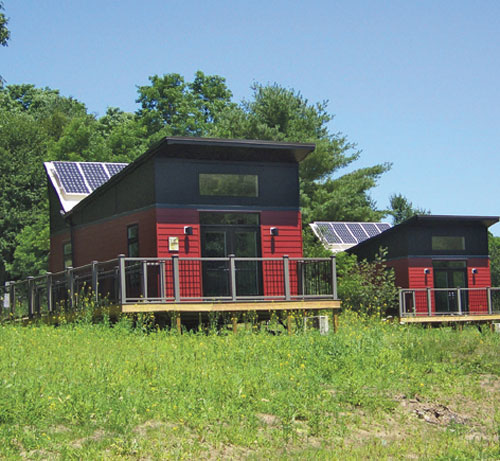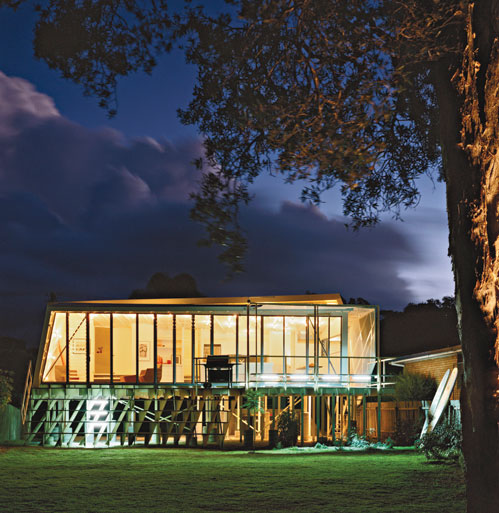Prefabrication's Green Promise
Learning Objectives:
- Describe the major types of prefabricated houses and name their components.
- Discuss the potential green benefits of prefabrication.
- Explain how green housing manufacturers and designers are leading changes in the prefabricated industry.
Credits:
Sears, Roebuck, and Company of Chicago, Illinois, published its first "modern homes" catalogue in 1908. Over the next 32 years, the company would deliver materials for over 70,000 kit homes, making it the largest housing provider in the world at the time. Sears provided a plan along with the materials needed to build the house, and delivered them by railroad: precut lumber, windows and doors, and finish materials. The homeowners provided the labor and, in many cases, customization of the home's details on site. Mass-produced prefabricated housing was born.
At the time, two technologies made the Sears homes both possible and affordable. The first was the precision-cut balloon frame that provided structural support for the houses. Although balloon framing was already widely in use, Sears was able to harness it for mass production, cutting each piece of lumber to size and shipping it to the site, where it was nailed in place by a local carpenter, requiring less labor and cost than other framing methods. The second innovative element in these homes was drywall, then a new material. It replaced skill intensive plaster-and-lath walls.
Many of the principles behind the Sears homes-mass production, efficient transportation, materials savings, and affordability-continue to fuel the prefabricated housing industry even today. Those same principles provide the basis for the environmental promise the industry now offers. Many forms of prefabricated housing, including modular and panelized construction, are usually durable as well as resource and energy efficient. However, with the exception of a few progressive manufacturers, the industry has yet to fully embrace environmental goals.
Â
Defining Prefabrication
The Sears kits, drywall, engineered lumber assemblies, and kitchen cabinets share something in common: they are examples of prefabrication in construction. At the level of houses, there are four major types of prefab: Manufactured houses, also known as mobile homes, HUD-code homes, or trailers, consist of a single module and are built to standards set by the U.S. Department of Housing and Urban Development (HUD). They are set on temporary or permanent foundations. Modular homes are constructed from two or more factory-built modules that are transported to site and placed on the foundation with most of the construction, including finish materials, completed in advance. Kit houses arrive on site as a collection of pre-cut parts and fasteners: some kits include everything needed to finish the home and others include just supplies needed for the structure and envelope. Panelized houses are constructed from factory-built panels, which range from structural insulated panels (SIPs) to engineered lumber assemblies to fully finished panels that include electrical wiring and plumbing.
Â
 |
The single-module PowerPod from Powerhouse Enterprises uses both passive and active solar strategies. Photo courtesy PowerHouse Enterprises |
Â
 |
The Burst house by architects Jeremy Edmiston and Douglas Gaultier uses a precision-cut plywood structural frame and insulated panels. Photo © 2008 Floto + Warner |
Â









